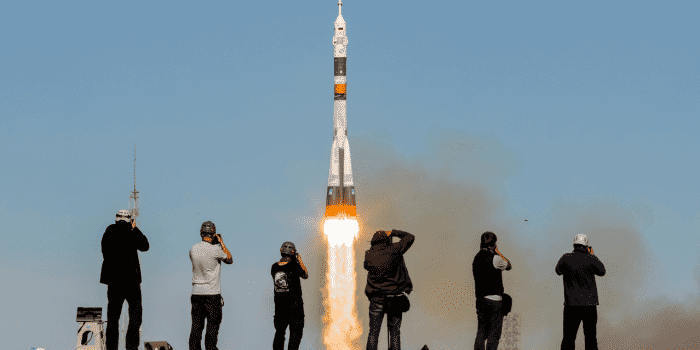In the case of the Moscow-Washington collaboration, two cosmonauts and one astronaut went to the International Space Station aboard a Soyuz rocket.
In a rare collaboration between Moscow and Washington, a US astronaut and two Russian cosmonauts landed safely at the International Space Station (ISS) after blasting off on a Russian-operated flight.
The Russian space agency, Roscosmos, and Nasa both broadcast live footage of the launch from Kazakhstan on Wednesday, with commentators saying the crew was “feeling well.”
The crew included NASA’s Frank Rubio, Russia’s Sergey Prokopyev and Dmitri Petelin, who launched from the Russia-leased Baikonur cosmodrome at 13.54 GMT.
The three will join three other Russian cosmonauts, three other US astronauts, and one Italian aboard the ISS for six months.

Rubio is the first American astronaut to go to the International Space Station on a Russian Soyuz rocket since Russian President Vladimir Putin launched troops into Ukraine on February 24. As a result, Western capitals, particularly Washington, have imposed unprecedented sanctions on Moscow, and bilateral ties have reached new lows.
One of the final areas of cooperation between the US and Russia is space. Anna Kikina, Russia’s sole female cosmonaut, is scheduled to be delivered at the orbiting station in early October on a SpaceX Crew Dragon.
Kikina will be just the fifth professional female cosmonaut from Russia or the Soviet Union to travel into space and the first Russian to fly onboard a SpaceX craft built by billionaire Elon Musk’s firm.
Russian cosmonauts and western astronauts have attempted to avoid the battle occurring on Earth, particularly when in orbit together.
The International Space Station (ISS) is a partnership between the United States, Canada, Japan, the European Space Agency, and Russia. It is divided into two sections: the US orbital portion and the Russian orbital segment.
The ISS currently relies on a Russian propulsion system to keep it in orbit, some 250 miles above sea level, with the US part responsible for electricity and life support services.
Tensions in the space sector have risen since Washington imposed sanctions on Moscow’s aerospace industry, prompting warnings from Russia’s former space head Dmitry Rogozin, a strong backer of the Ukraine war.

Yury Borisov, Rogozin’s recently appointed successor, later confirmed Russia’s long-rumoured decision to abandon the ISS after 2024 to build its orbiting station. Nasa, the US space agency, termed the decision an “unfortunate development” that will impede scientific activity on the International Space Station.
According to space analysts, building a new orbital station may take more than a decade, and Russia’s space sector, a source of national pride, would be unable to thrive under harsh sanctions.
The International Space Station (ISS) was launched in 1998, during a moment of optimism for US-Russia collaboration following their space race struggle during the cold war.
The Soviet space programme was thriving at the time. Its feats included sending the first man into space in 1961 and launching the first satellite four years earlier.

According to experts, Roscosmos has endured a series of setbacks in recent years, including corruption scandals and the loss of several satellites and other spacecraft.
Russia’s years-long monopoly on crewed missions to the International Space Station has been passed to SpaceX, along with millions of dollars in revenue.


